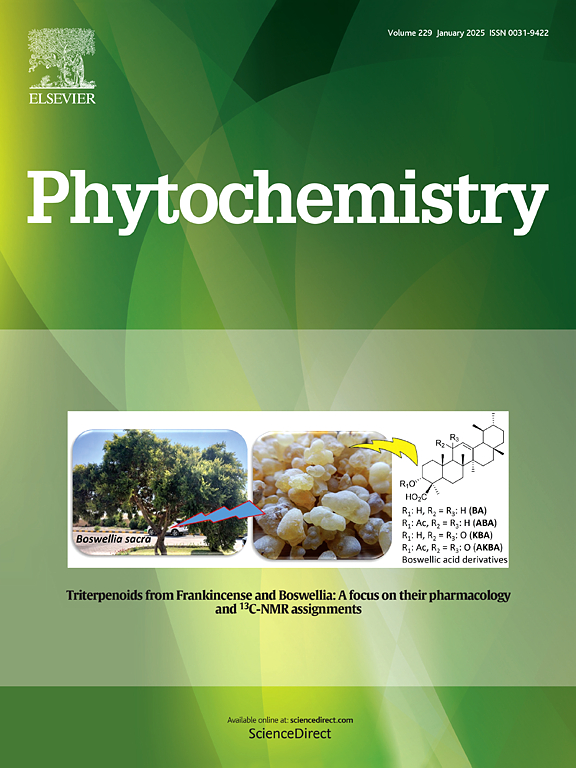Homologous acetylenic acetogenins from Porcelia macrocarpa R.E. (Fries) displayed potent activity against amastigotes from Trypanosoma cruzi
IF 3.4
2区 生物学
Q2 BIOCHEMISTRY & MOLECULAR BIOLOGY
引用次数: 0
Abstract
As part of our continuous study on the Annonaceae species Porcelia macrocarpa, in the present work, eight chemically related 2-alkyl-3-hydroxy-4-methyl-γ-lactones (1–8) were isolated. Their structures were characterised by NMR, MS, and VCD. Their antitrypanosomal activity was evaluated in vitro against intracellular amastigotes with EC50 values ranged from 13.9 to 1.1 μM for compounds 1–3 and 6–8, while compounds 4 and 5 were inactive (EC50 > 100 μM). Compounds 1–8 did not exert toxicity against NCTC cells at the highest tested concentration (CC50 > 200 μM). Compared with the standard drug benznidazole (EC50 = 3.6 μM and SI > 54.6), compound 8 proved to be the most potent γ-lactone with an EC50 of 1.1 μM and an SI of >181.8. Finally, the structure–activity relationship analysis suggested that flexibility and length of side chain of the related γ-lactones 1–8 play an important role in the activity against amastigotes. The results contribute to the discovery of new molecular prototypes that can be used as scaffolds for developing drugs to treat Chagas disease.

Porcelia macrocarpa R.E. (Fries)的同源乙炔苷元对克鲁兹锥虫的母细胞具有强效活性。
作为我们对番石榴科植物坡瓷(Porcelia macrocarpa)持续研究的一部分,本研究分离了8个化学相关的2-烷基-3-羟基-4-甲基-γ-内酯(1-8)。用NMR、MS和VCD对其结构进行了表征。化合物1 ~ 3和6 ~ 8的体外抗锥虫活性在13.9 ~ 1.1 μM之间,而化合物4和5的EC50在100 μM ~ 100 μM之间无活性。化合物1 ~ 8在最高浓度(CC50 ~ 200 μM)下对NCTC细胞无毒性作用。与标准药物苯并硝唑(EC50 = 3.6 μM, SI为> 54.6)相比,化合物8的EC50为1.1 μM, SI为> 181.8,是最有效的γ-内酯。最后,构效关系分析表明,相关γ-内酯1-8的柔韧性和侧链长度对其抗无纺丝菌活性起重要作用。这些结果有助于发现新的分子原型,可以用作开发治疗恰加斯病的药物的支架。
本文章由计算机程序翻译,如有差异,请以英文原文为准。
求助全文
约1分钟内获得全文
求助全文
来源期刊

Phytochemistry
生物-植物科学
CiteScore
6.40
自引率
7.90%
发文量
443
审稿时长
39 days
期刊介绍:
Phytochemistry is a leading international journal publishing studies of plant chemistry, biochemistry, molecular biology and genetics, structure and bioactivities of phytochemicals, including ''-omics'' and bioinformatics/computational biology approaches. Phytochemistry is a primary source for papers dealing with phytochemicals, especially reports concerning their biosynthesis, regulation, and biological properties both in planta and as bioactive principles. Articles are published online as soon as possible as Articles-in-Press and in 12 volumes per year. Occasional topic-focussed special issues are published composed of papers from invited authors.
 求助内容:
求助内容: 应助结果提醒方式:
应助结果提醒方式:


